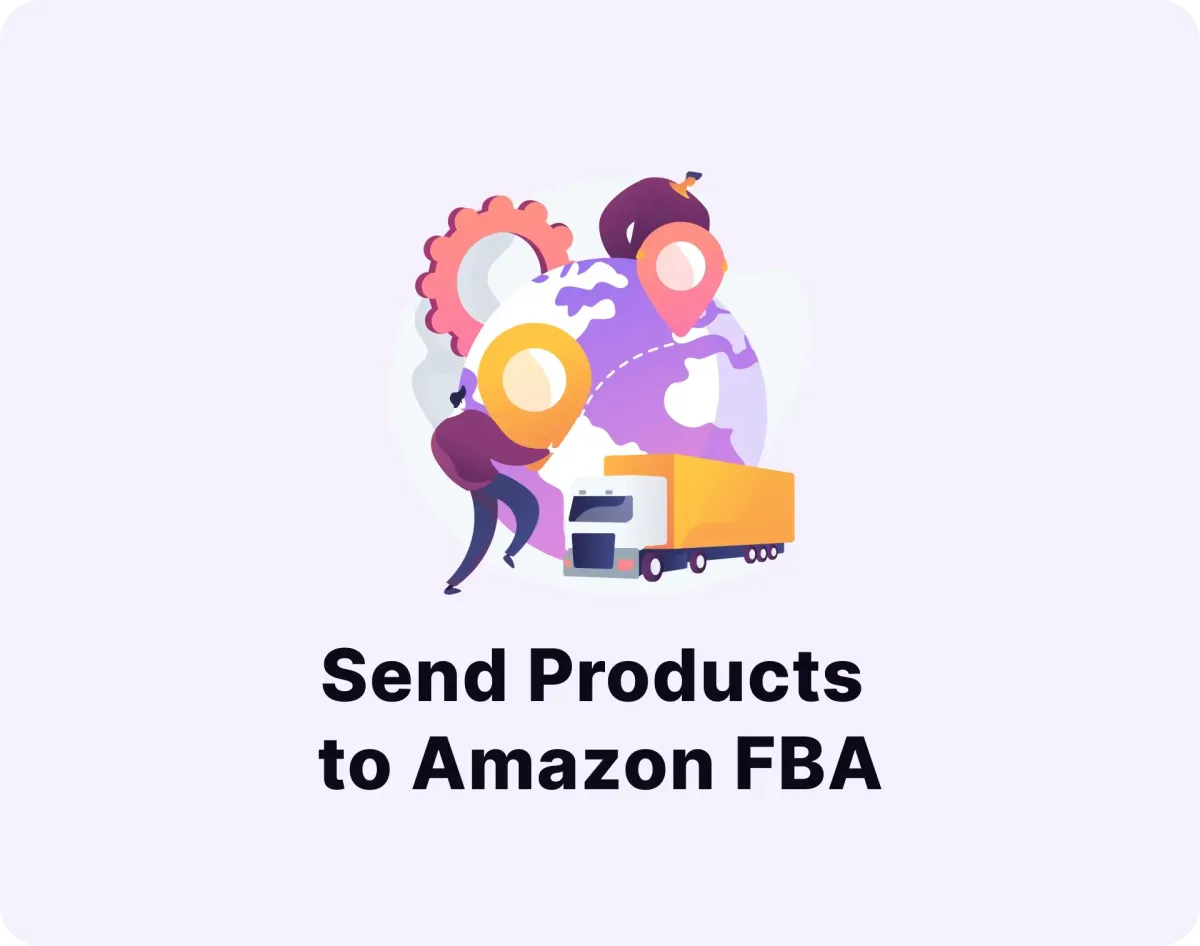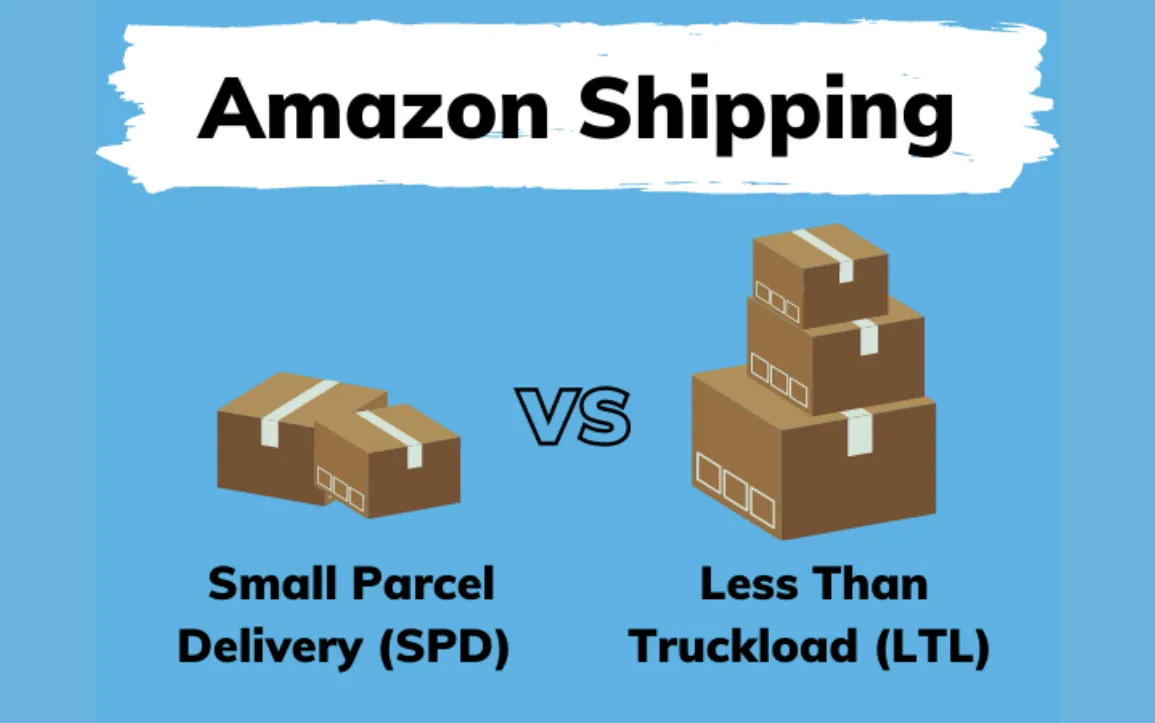
How to Send Products to Amazon FBA: A Complete Step-by-Step Guide
Amazon's Fulfillment by Amazon (FBA) program has revolutionized e-commerce by allowing sellers to leverage Amazon's massive logistics network. With FBA, you can store your products in Amazon's warehouses, and they'll handle everything from storage and packing to shipping and customer service. This comprehensive guide will walk you through the entire process of sending your first shipment to Amazon FBA.
1. What Is Amazon FBA and How Does It Work?
Amazon FBA (Fulfillment by Amazon) is a service where Amazon stores your products in their fulfillment centers and handles the entire order fulfillment process. When a customer places an order, Amazon picks, packs, and ships your product directly to the customer. They also handle customer service inquiries and returns on your behalf.
The process is straightforward: you send your inventory to Amazon's warehouses, and they take care of the rest. Amazon charges FBA storage fees, fulfillment fees, and other services fees, but many sellers find the convenience and Prime eligibility worth the cost.

FBA vs FBM:
FBA: Amazon handles fulfillment and customer support. Eligible for Prime.
FBM: You handle shipping and customer service. More control, but more work
2. Requirements Before Sending Products to FBA

Before you can send your first shipment, you'll need to meet several prerequisites:
Professional Seller Account: You must have an Amazon Professional Seller Account ($39.99/month) to use FBA. Individual seller accounts cannot access FBA services.
Understanding Product Restrictions: Amazon has strict guidelines about what can and cannot be sent to FBA. Prohibited items include hazardous materials, certain electronics, perishable goods, and items requiring special handling. Always check Amazon's current FBA product restrictions before sourcing products.
GTIN/UPC Requirements: Most products need a Global Trade Item Number (GTIN), typically in the form of a UPC barcode. You can purchase UPCs from GS1 or apply for a GTIN exemption through Seller Central if your products don't have existing barcodes.
Packaging and Labeling Knowledge: Amazon has specific requirements for how products must be packaged and labeled. Products in poly bags must meet thickness requirements, fragile items need appropriate protection, and all products must have proper FNSKU labels for identification.
3. Product Preparation
Proper product preparation is crucial for avoiding delays and additional fees:
Labeling Requirements: Each unit must have an FNSKU (Fulfillment Network Stock Keeping Unit) label that Amazon uses to track your inventory. You can choose to label products yourself or pay Amazon to do it (at an additional cost per unit). FNSKU labels must be scannable and placed according to Amazon's guidelines.
Packaging Standards: Products must be properly packaged to prevent damage during transport and storage. Items in poly bags require bags of at least 1.5 mil thickness with suffocation warnings. Fragile items need bubble wrap or other protective packaging. Liquids must be sealed in leak-proof bags.
Special Considerations: If you're selling bundled products, they must be packaged together and cannot be separated. Products with expiration dates must have dates clearly visible and be properly marked. Amazon requires at least 90 days of shelf life remaining when products arrive at their warehouses.
Amazon FBA Prep Service: If you prefer not to handle preparation yourself, Amazon offers a prep service for an additional fee. They can apply labels, bag products, and handle other preparation requirements, though this increases your costs per unit.

4. Creating a Shipping Plan in Seller Central
Creating a shipping plan is where the FBA process officially begins:
Navigate to Inventory: Log into Seller Central and go to Inventory > Manage FBA Inventory
Select Products: Choose the products you want to ship by checking the boxes next to them
Start Shipping Plan: Click "Send/Replenish Inventory" to begin creating your shipment
Conversion Process: If you're converting existing listings to FBA, confirm your selections and proceed
Product Configuration: You'll need to specify whether you're sending case-packed products (multiple units in manufacturer packaging) or individual products. Case-packed can save time but has stricter requirements.
Quantity and Details: Enter the exact quantity of each product you're shipping. Double-check these numbers as discrepancies can cause receiving delays. Confirm your prep category and labeling preferences for each item.
5. Choosing Your Shipping Method
Amazon offers several shipping options depending on your shipment size and budget:
Small Parcel Delivery (SPD): Best for smaller shipments (typically under 150 pounds). These shipments go through standard carriers like UPS and FedEx. SPD shipments are processed faster and have fewer restrictions.
Less Than Truckload (LTL): For larger, heavier shipments (typically over 150 pounds). LTL freight requires palletizing and has specific requirements for delivery appointments. While more complex, LTL is often more cost-effective for large shipments.
Amazon Partnered Carriers: Amazon has negotiated rates with carriers like UPS that are often better than retail rates. Using partnered carriers also provides better shipment tracking and integration with Seller Central.
Cost Considerations: Amazon's shipping calculator will show estimated costs for different methods. Factor in your time for drop-off versus pickup services, and consider that faster shipping gets your inventory available sooner.

6. Printing and Applying Labels
Proper labeling is critical for successful FBA shipments:
FNSKU Product Labels: These unique labels identify each unit of your product in Amazon's system. Print these on standard label paper and apply them to each unit according to Amazon's placement guidelines. The labels must be scannable and not cover important product information.
Box Labels: Each shipping box needs Amazon shipment ID labels. These help Amazon identify which shipment each box belongs to during receiving. Print these labels clearly and apply them to the outside of each box.
Pallet Labels: LTL shipments require pallet labels on all four sides of each pallet. These labels include important shipment information and handling instructions for Amazon's receiving teams.
Label Quality: Use a high-quality printer and label paper to ensure labels remain scannable throughout shipping. Poor quality labels can cause receiving delays and additional fees.
7. Packing and Sending Your Shipment
Following Amazon's packing guidelines prevents damage and delays:
Box Requirements: Use sturdy boxes in good condition. Amazon specifies maximum box weights (typically 50 pounds unless contents require it) and dimensions. Overpacked or underpacked boxes can cause receiving issues.
Packing Materials: Use appropriate packing materials to prevent damage. Fill empty space with packing material, but don't overpack to the point where boxes bulge. Each box should contain only products from one shipment.
Shipping Process: For SPD shipments, you can drop off at UPS locations or schedule pickups. For LTL shipments, you'll need to coordinate delivery appointments with Amazon's warehouses. Keep all tracking information and monitor shipment progress through Seller Central.

8. What Happens After Amazon Receives Your Shipment
Understanding the receiving process helps set proper expectations:
Check-in Timeline: Amazon typically begins processing shipments within 24-48 hours of arrival, but complete check-in can take several days to weeks depending on volume and complexity.
Inventory Updates: As products are checked in, they become available for sale in your inventory. You'll see updates in Seller Central showing received quantities and any discrepancies.
Common Issues: Occasional discrepancies between shipped and received quantities are normal and often resolve themselves as Amazon completes the receiving process. Missing inventory may be found and added to your account days or weeks later.
Problem Resolution: If you notice significant discrepancies or damaged products, you can open cases with Amazon's support team. Keep detailed records of what you shipped to support any claims.
9. Tips for First-Time FBA Sellers
Starting with FBA can be overwhelming, but these tips will help ensure success:
Start Small: Send a small test shipment first to familiarize yourself with the process. This allows you to make mistakes on a smaller scale and learn the system before committing larger inventory.
Use Amazon's Tools: Seller Central offers various tools to help avoid common mistakes. The shipment creation process includes warnings about potential issues, and the Revenue Calculator helps estimate profitability including FBA fees.
Monitor Storage Limits: New sellers often have inventory storage limits. Monitor these limits and request increases as needed. Exceeding limits can result in additional fees or shipment restrictions.
Track Performance: Keep an eye on stranded inventory (products that can't be sold due to listing issues) and suppressed listings. These issues can tie up your inventory and reduce sales potential.
10. FAQs: Sending to Amazon FBA
Can I send inventory without labeling it? You can pay Amazon to label your products through their FBA prep service, but this adds per-unit costs. Self-labeling is more cost-effective but requires time and attention to detail.
How long does it take for inventory to be available? Small parcel shipments typically become available within 3-7 days, while LTL shipments can take 1-3 weeks. Processing times vary based on Amazon's receiving capacity and seasonal demand.
What if my products get lost or damaged? Amazon provides reimbursement for products lost or damaged in their facilities. You'll need to file claims through Seller Central and provide supporting documentation. Keep detailed records of your shipments to support any claims.
Can I send multiple products in one shipment? Yes, you can include multiple products in a single shipment, but each product type must meet its specific preparation requirements. Mixed shipments are common and can save on shipping costs.
What happens if I make mistakes in my shipping plan? Minor discrepancies are usually handled automatically, but significant errors can cause delays or additional fees. Amazon may charge for additional prep work or return non-compliant products.
Conclusion
Sending your first shipment to Amazon FBA might seem complex, but following these steps systematically makes the process manageable. Start with proper preparation, create accurate shipping plans, follow Amazon's guidelines precisely, and monitor your shipments through the receiving process.
The key to FBA success is attention to detail and following Amazon's requirements exactly. While there's a learning curve, the benefits of leveraging Amazon's fulfillment network—including Prime eligibility, professional fulfillment, and freed-up time for growing your business—make it worthwhile for most sellers.
Take your time with your first shipment, double-check everything, and don't hesitate to start small while you learn the process. Once you've successfully sent a few shipments, the process becomes routine, and you can focus on sourcing products and growing your Amazon business.
Ready to get started? Log into Seller Central and begin creating your first shipping plan today. The sooner you start, the sooner you'll be benefiting from Amazon's world-class fulfillment network.
